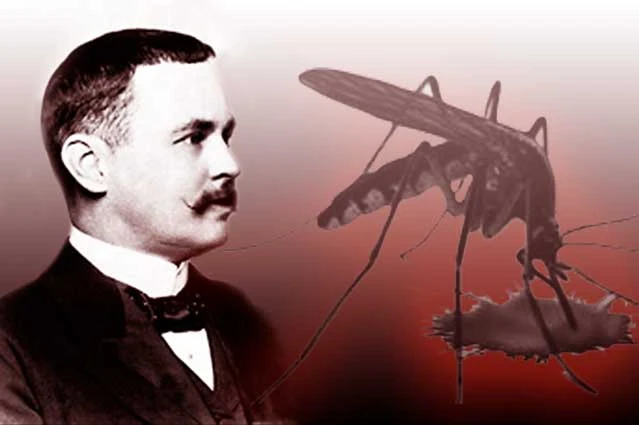Ronald Ross inventor of the malarial parasite Nations United Kingdom
Ronald Ross inventor of the malarial parasite Nations United Kingdom - Ronald Ross was born in the United Kingdom on 13 may 1857. He was a descendant of Sir CCG Ross, a General in the army of the United Kingdom. He is a United Kingdom scientists received the Nobel Prize in Physiology or Medicine in 1902 his work on malaria. His discoveries on malaria parasites in the gastrointestinal system of the Anopheles mosquitoes demonstrate the fact that the disease.
Ross began his study of medicine at St. Bartholomew's Hospital in London in 1875. After graduating from there in 1879, he entered the Medical Department of India and helped during the war United Kingdom-Burma III broke out in 1885.
In 1894, he decided to make an experimental investigation in India from the hypothesis that mosquitoes Laveran and Manson are related to the spread of the disease. He researched for two years and had to accept failure.
After the defeat, Ross finally managed to find the life cycle of malaria parasites in mosquitoes, thus forming a hypothesis Laveran and Manson. He found the presence of malaria parasites in mosquitoes of the Anopheles in 1897.
 |
| Ronald Ross |
He used a Guinea pig in the form of birds that contracted malaria. From there, he was able to ascertain the entire life cycle of the malarial parasite, including its presence in the salivary glands of mosquitoes.
He pointed out that malaria is spread from infected birds to people by the bite of mosquitoes. This discovery is considered successfully proved how disease spreads in humans.
After a successful find cycle had spread malaria, Ross returned to the United Kingdom in 1899 and became a member of the Liverpool School of Tropical Medicine. Under the direction of Sir Alfred Jones, he was sent to West Africa to continue his research to find the mosquito species in Africa. His arrival in Africa supported by many parties. In Africa's community and local authorities continue to seek improved health and aims to reduce malaria.
In 1901, Roos was elected a Fellow of the Royal College of Surgeons in the United Kingdom. He also became a Vice-President of the Royal Society. In 1902 he was appointed a professor. Then in 1911, Ross was named commander with the rank of Knight of the order.
The Government of Belgium gave him a position as a part of a member of the Order of Leopold II. He was also due to the title of Peerage in 1911. A year later, he became the physician of tropical diseases disease at King's College Hospital, London.
The Office concurrently with his position as Chairman of the Tropical Sanitation in Liverpool. Furthermore, in 1926 he held positions as Director of the Ross Institute and head of the Hospital of Tropical Diseases and Hygiene.
The most important research is his mathematical analysis model about the prevention of malaria. The model he developed for the study of disease, and the idea was started since the publication of his research reports on Mauritius in 1908.
The results were outlined in his report entitled "the prevention of Malaria" (1911), which is then described in further detail in the form of a collection of published scientific records of the Royal Society in 1915 and 1916.
The note describes a serious interest in mathematics, which is not only limited to malaria but also has been a significant contribution to the field of pure mathematics applied. Opinions about Ross optometry is it's most popular, and forty years later became the basis for the understanding of disease caused by insects.
Ross is a very passionate figure in the prevention of malaria in various countries in the world. He has conducted the survey in many places, such as West Africa, the Suez Canal, Yunani, Mauritius, Cyprus, and areas of war-torn areas in the period of 1914-1918. He has also initiated the organization engaged in the prevention of malaria in the plantation industry in India and Srilanka.
Roos married Rosa Bessie Bloxam in 1889. Of the marriage, he had two sons, namely, Ronald and Charles, as well as two daughters Dorothy and Sylvia. His wife died in 1931. A year later, Ross also died at the Ross Institute, London on 16 September 1932.
Read also: The history of the discovery of DDT by Paul Hermann Muller
Read also: The history of the discovery of DDT by Paul Hermann Muller
